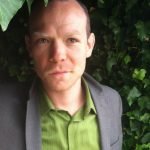Node Smith, ND
Quite an extensive new study on the apoE4 gene was recently published, describing the mechanism by which this gene infers risk of Alzheimer’s disease as well as foreshadowing potential pharmaceutical interventions.1
ApoE4 gene and Alzheimer’s disease
ApoE4 is the primary genetic risk factor for Alzheimer’s disease (AD). Having a single copy of the gene more than doubles the likelihood a person will develop AD, while 2 copies of the gene increases risk by 12 times. The comparison is being made to the most common version of the gene, apoE3.
ApoE4 codes differs from the apoE3 protein in a more damaging manner
ApoE4 codes for a protein of the same name, which differs from the apoE3 protein and is much more damaging to the brain. It has been unclear why the apoE4 protein is so much more damaging. The researchers were able to show how the protein becomes more damaging to the brain, as well as erase the damage by changing the apoE4 protein into an apoE3-like version.
Research depended on using a model that differed from traditional AD research models
The research depended on using a model that differed from traditional AD research models, which has largely used mice, and mouse brain tissue. The mouse models have largely been unsuccessful, and shown to not adequately represent the same disease process that occurs in human brains. Many pharmaceuticals have been shown to work great in a mouse model, only to fail miserably in human trials.
The researchers of this study decided to use human cells to model and test new drugs for AD.
Here’s what the researchers discovered
What they saw when studying these new drugs was that the misfolded apoE4 protein cannot function and is broken down into fragments in the neurons. These fragments are toxic, and ultimately disease promoting, and correlated with the accumulation of tau and amyloid peptides. The presence of apoE4 does not change the production of amyloid beta in a mouse model, but in human cells the researchers saw that apoE4 significantly increased beta amyloid production.
Researchers examined brain cells that did not produce either apoE3 or apoE4 protein and here’s what they found
The researchers examined brain cells that did not produce either apoE3 or apoE4 protein, to determine whether an absence of apoE3 or the presence of apoE4 was the culprit for cellular damage. What they found was that with neither protein, the cells looked and functioned like apoE3 cells, but when apoE4 was added the cells were damaged and presented AD like pathological changes. So, it appears that the presence of apoE4, rather than the absence of apoE3, promotes AD.
Research team is working on a “structure corrector”
The research team is also working on a “structure corrector” that will change the structure of the harmful apoE4 protein to more resemble the apoE3 protein. The development of these structure correctors has been initiated and already shown to restore normal cellular function and elimination of AD signs. The research team is currently working on bringing the agents into human trials.
Image Copyright: <a href=’https://www.123rf.com/profile_juangaertner’>juangaertner / 123RF Stock Photo</a>
 Node Smith, ND, is a naturopathic physician in Portland, OR and associate editor for NDNR. He has been instrumental in maintaining a firm connection to the philosophy and heritage of naturopathic medicine among the next generation of docs. He helped found the first multi-generational experiential retreat, which brings elders, alumni, and students together for a weekend camp-out where naturopathic medicine and medical philosophy are experienced in nature. Four years ago he helped found the non-profit, Association for Naturopathic ReVitalization (ANR), for which he serves as the board chairman. ANR has a mission to inspire health practitioners to embody the naturopathic principles through experiential education. Node also has a firm belief that the next era of naturopathic medicine will see a resurgence of in-patient facilities which use fasting, earthing, hydrotherapy and homeopathy to bring people back from chronic diseases of modern living; he is involved in numerous conversations and projects to bring about this vision.
Node Smith, ND, is a naturopathic physician in Portland, OR and associate editor for NDNR. He has been instrumental in maintaining a firm connection to the philosophy and heritage of naturopathic medicine among the next generation of docs. He helped found the first multi-generational experiential retreat, which brings elders, alumni, and students together for a weekend camp-out where naturopathic medicine and medical philosophy are experienced in nature. Four years ago he helped found the non-profit, Association for Naturopathic ReVitalization (ANR), for which he serves as the board chairman. ANR has a mission to inspire health practitioners to embody the naturopathic principles through experiential education. Node also has a firm belief that the next era of naturopathic medicine will see a resurgence of in-patient facilities which use fasting, earthing, hydrotherapy and homeopathy to bring people back from chronic diseases of modern living; he is involved in numerous conversations and projects to bring about this vision.


